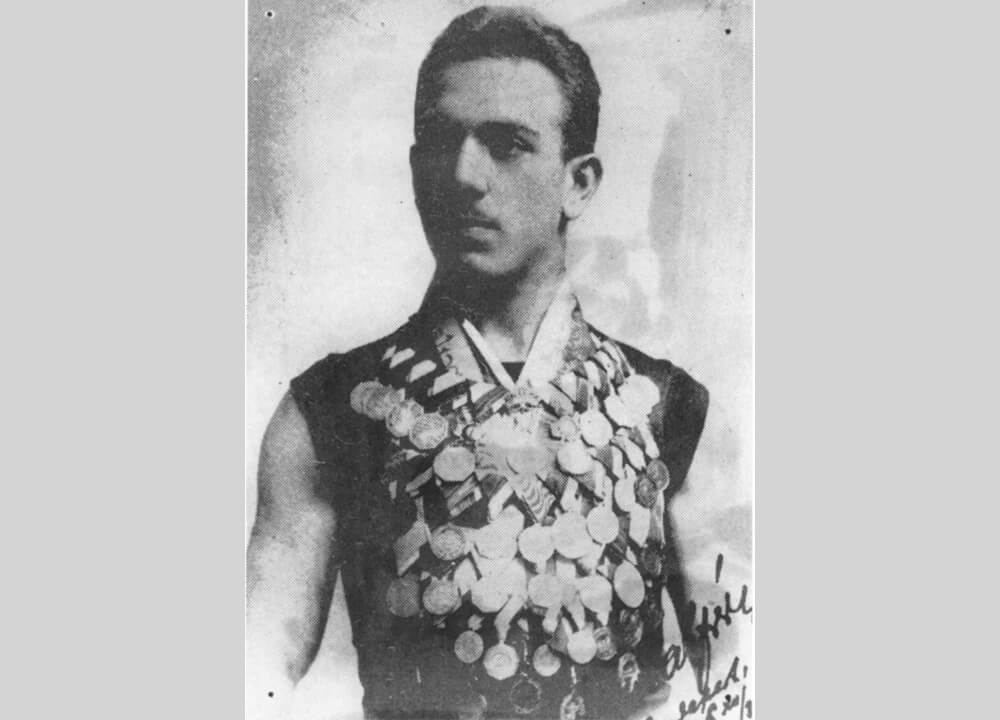Swimming World Presents – Takeoff To Tokyo: Iconic Moments In Olympic History

The latest issue of Swimming World Magazine
is now available for download in the Swimming World Vault!
Non-Subscribers Can Download This Issue Here
Takeoff To Tokyo: Iconic Moments In Olympic History
By John Lohn
In October of 2019, nearly a year prior to the original date of the 2020 Olympic Games in Tokyo, Swimming World designed a series that would pay homage to the history of the sport on its biggest stage.
Dubbed “Takeoff to Tokyo,” the series would feature some of the most-intriguing storylines from the more than 100 years of the Games.
Sometimes, plans do not go according to plan, and when the COVID-19 pandemic struck and forced a one-year delay of the Olympics, “Takeoff to Tokyo” saw its life expectancy extended. The series ultimately grew into nearly a two-year endeavor, one that featured pieces on legendary figures, epic races and dark moments. Now, with the Olympics set to take place, it is time to say farewell to this project.
For our final installment, we offer a look (in chronological order) at some of the most prominent moments in Olympic lore. While some of these entries have been explored in deeper profiles during the series, several are new additions to the TTT vault.
We hope you enjoy this final chapter, and what has come before.
THE INAUGURAL CHAMP (1896)
In 1896, when the Modern Games debuted in Athens, Hungarian Alfred Hajos earned a distinction that will never be removed: First swimming champion. Jumpstarting what has been a rich history for Hungary in Olympic waters, Hajos captured gold in the 100 meter freestyle, a title that was later complemented by another gold medal in the 1200 freestyle. (It wasn’t until 1908 that the event was contested over 1500 meters.)
In the more than a century that has elapsed since Hajos raced to victory in the Mediterranean Sea, Hungary has produced legends such as Tamas Darnyi, Krisztina Egerszegi and Katinka Hosszu. But Hajos will always be his nation’s first Olympic champ and viewed as the athlete who set the stage for future success.
THE FIRST LADY (1912)
Sixteen years after the Olympic Games were first held in their modern form, women competed in the sport of swimming at the 1912 Games in Stockholm. There, Australian Fanny Durack etched her name in the history books when she won the 100 freestyle and opened the door for fellow female athletes to show their skills.
This summer in Tokyo, 109 years after Durack broke a gender barrier, the swimming schedule at the Olympics will be identical for men and women.
THE BREAK OF DAWN (1956, 1960, 1964)
At the 1964 Olympics, Australia’s Dawn Fraser was already a legend, having won the 100 freestyle at back-to-back Games in 1956 and 1960. The sprint star, however, elevated her status even further in Tokyo, as she secured a third consecutive gold medal in the 100 free, this achievement despite Fraser nursing a neck injury from a car accident several months earlier that also claimed the life of her mother.
Fraser remained the only member of the three-peat club until 1996, when Hungarian Krisztina Egerszegi won her third straight Olympic crown in the 200 backstroke. Michael Phelps finally gave the male gender inclusion at the 2012 Olympics, when he three-peated in both the 100 butterfly and 200 individual medley. Four years later, at the 2016 Games in Rio de Janeiro, Phelps made it four in a row in the 200 medley.
“I put myself under a lot of pressure by deciding to go to Tokyo, and I also put myself under a lot of pressure to compete in the same event in three Olympics,” Fraser said. “I had, at the back of my mind, that this was for my mother because we were saving up for my mother to go to Tokyo with me. I just imagined that she was there and that I was doing it for her.”
FREESTYLE QUEEN (1968)
So much is made of what Katie Ledecky has accomplished, and rightfully so. A case can be made for Ledecky as the finest female swimmer in history, and her gold-medal trifecta at the 2016 Olympics might be the best evidence for that claim. But before Ledecky came along, American teenager Debbie Meyer provided targets for all to chase.
At the 1968 Olympics in Mexico City, Meyer won the 200 freestyle, 400 freestyle and 800 freestyle. It is tough enough to pull off three wins in a single Olympiad, but Meyer also had to overcome asthma while racing at high altitude. More than a half-century later, Meyer’s trifecta is still revered, and can be considered a motivational force as Ledecky replicated the feat at the 2016 Games.
Get Swimming World Magazine and Swimming World Biweekly FREE When You
Become A Member of the International Swimming Hall of Fame
New! 30 Day Membership to ISHOF AND Digital Swimming World Subscription for just $10 a month!
Want more? Get a 1 Year ISHOF Family Membership With Swimming World Print AND Digital Subscription Order Now!
Non-Subscribers can click here to download this issue for only $5.94
FEATURES
010 | TOKYO OLYMPIC GAMES: READY FOR IMPACT
by Dan D’Addona, Matthew De George, John Lohn, David Rieder and Andy Ross
As the United States was still selecting its Olympic swimming team in mid-June, most countries had already decided who would be competing at the COVID-19 pandemic-delayed Olympic Games this summer. Here are profiles of 10 swimmers from around the world who have been preparing to make an impact in Tokyo.
022 | TAKEOFF TO TOKYO: ICONIC MOMENTS IN OLYMPIC HISTORY
by John Lohn
In October of 2019, nearly a year prior to the original date of the 2020 Olympic Games in Tokyo, Swimming World designed a series that would pay homage to the history of the sport on its biggest stage. For our final installment of “Takeoff to Tokyo,” we offer a look at some of the most prominent moments in Olympic lore.
026 | AS GOOD AS IT GETS
by Dan D’Addona
In our Olympic preview of artistic swimming, Swimming World notes that Russia is a perfect 10-for-10, winning every Olympic gold medal possible—duet and team—since the turn of the century. Led by Svetlana Romashina and Svetlana Kolesnichenko, Russia will be tough to beat next month, Aug. 2-7, in Tokyo.
COACHING
20 | SWIMMING TECHNIQUE CONCEPTS: MAXIMIZING SWIMMING VELOCITY (Part 3)—MINIMIZING THE ARM ENTRY PHASE TIME IN FREESTYLE AND BUTTERFLY
by Rod Havriluk
The non-propulsive time in a stroke cycle consists of the time for the entry phase and the recovery phase. This article presents strategies to minimize the entry phase time for freestyle and butterfly so that a swimmer can decrease stroke cycle time, increase stroke rate and increase swimming velocity.
040 | A COACHES’ GUIDE TO ENERGY SYSTEMS (Part 2)
by Michael J. Stott
Last month, Swimming World explored the concept of energy systems and how coaches can use them to maximize athlete development and performance. In Part 2, we examine how one incorporates his understanding of energy systems into a seasonal training plan.
042 | Q&A WITH COACH SID CASSIDY
by Michael J. Stott
043 | HOW THEY TRAIN MEGAN MORONEY AND ASPEN GERSPER
by Michael J. Stott
TRAINING
019 | DRYSIDE TRAINING: SUMMER SPEED
by J.R. Rosania
JUNIOR SWIMMER
45 | UP & COMERS: KAYLA HAN
by Shoshanna Rutemiller
COLUMNS & SPECIAL SECTIONS
008 | A VOICE FOR THE SPORT
018 | THE OFFICIAL WORD
027 | 2021 AQUATIC DIRECTORY
046 | GUTTERTALK
047 | PARTING SHOT
Swimming World is now partnered with the International Swimming Hall of Fame. To find out more, visit us at ishof.org




